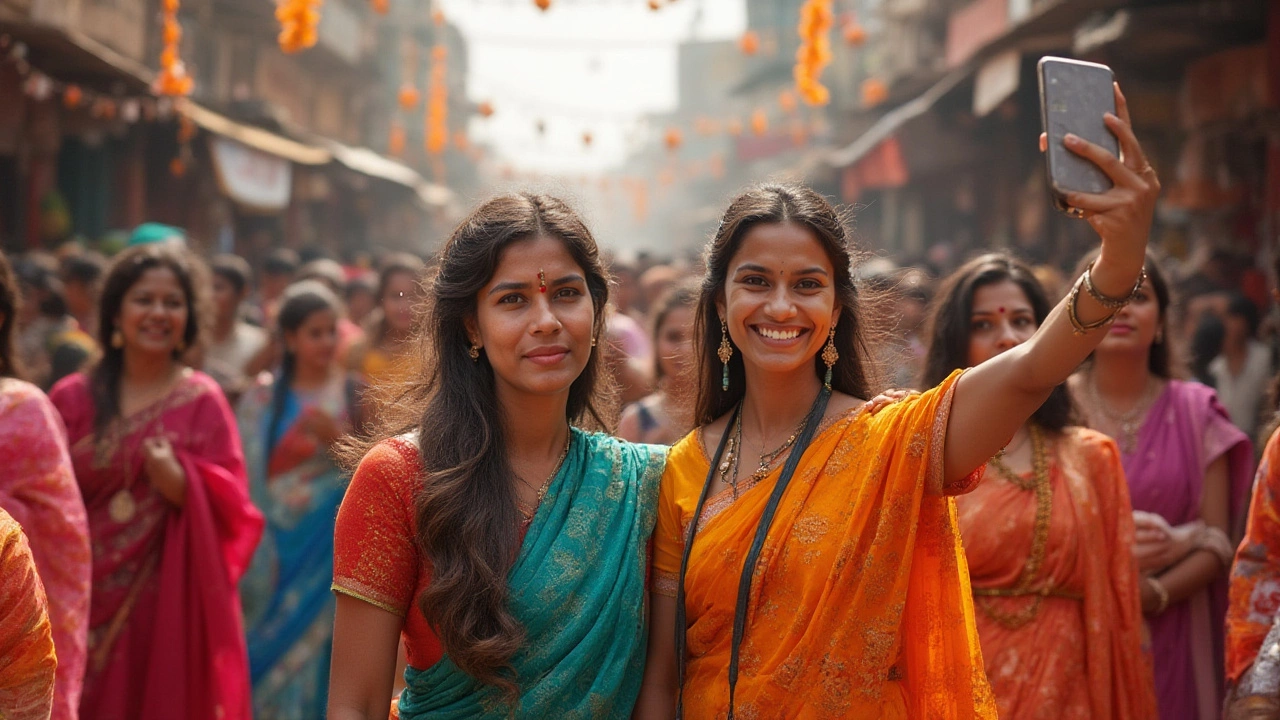
Curious about what to wear in India? Learn about sarees, salwar kameez, lehenga choli, and other popular Indian dresses, with tips for locals and travelers.
When talking about Saree, a traditional Indian drape made of a long fabric panel, usually worn by women for festivals, weddings, and everyday occasions. Also known as Indian saree, it serves as a canvas for cultural expression. The fabric itself can be silk, a lustrous natural fiber prized for its sheen and drape, while the way it’s wrapped falls under various draping styles, regional techniques like Nivi, Bengali, or Gujarati that change the silhouette and reveal different portions of the body. Complementary jewellery, ornamental pieces such as bangles, necklaces, and mangalsutra that accentuate the outfit completes the look. A saree isn’t just clothing; it’s a statement of heritage, taste, and personal style.
Choosing the right fabric is the first step toward a confident look. Cotton offers breathability for summer events, while chiffon provides flow for contemporary parties. Silk, especially pure mulberry silk, brings a regal shine that pairs well with heavy gold jewellery. When you pick a fabric, you’re also deciding its durability, care needs, and price point—silk can cost more but also retains value over time. In fact, a silk saree often becomes a family heirloom, linking generations through its texture and colour.
Once the fabric is set, the draping style determines the overall vibe. The classic Nivi drape hides the midriff, making it suitable for formal gatherings, whereas the western-inspired pant style adds comfort for city life. Each style influences how you accessorise; a deep‑pleated drape showcases long necklaces, while a short‑bordered style highlights traditional bangles. This relationship creates a simple rule: the more elaborate the drape, the more intricate the jewellery should be.
Jewellery isn’t an afterthought—it’s a key player in the saree equation. Gold pieces, such as a 22K mangalsutra or a set of polished bangles, bring warmth that mirrors the silk’s glow. For lighter fabrics, opting for silver or gemstone‑embellished pieces prevents the look from feeling heavy. Pairing a diamond‑accented necklace with a plain ivory saree creates a balanced contrast, while a statement Kundan set works best with vibrant reds. The right combination elevates the outfit from everyday wear to a standout moment.
Before you buy, consider the piece’s long‑term value. Gold jewellery, especially 750 hallmark pieces, often retains or even appreciates in price, making it a smart investment alongside a beautiful saree. Diamond accessories follow a similar pattern, with clarity and cut influencing resale value. If you’re eyeing a designer silk saree, check for hallmarks on any accompanying gold, because authenticity guarantees both aesthetic appeal and financial security. Knowing these details lets you shop confidently, whether you’re planning a wedding or building a timeless wardrobe.
Below you’ll find a hand‑picked collection of articles that dive deeper into each of these topics—fabric choices, draping techniques, jewellery pairings, and smart buying tips. Explore the insights, compare opinions, and walk away with actionable knowledge to make your next saree experience unforgettable.

Curious about what to wear in India? Learn about sarees, salwar kameez, lehenga choli, and other popular Indian dresses, with tips for locals and travelers.